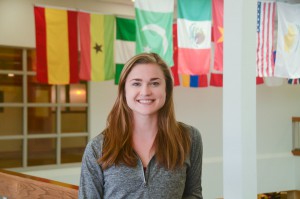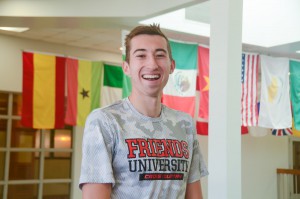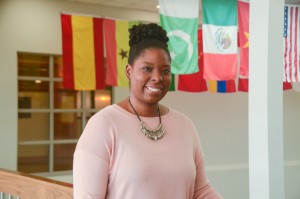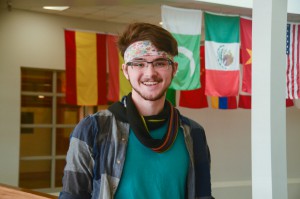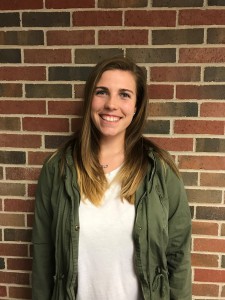Spring 2018
- Welcome from the chair – By Dr. Nora Strasser
- Health Science news
- Meet your Health Science Club leaders – By Austin Wapp and Emily Thompson
- Internship experiences
- Freshman survival – By Daniel Yeremin
- Faith and science – By Macey Westbrook
- Q&A: Adventure of a lifetime – Featuring Madeline Flucke
- The connection between art and science – By Elizabeth McKee
Welcome from the chair
Welcome to the first newsletter for the Health Sciences at Friends University. As the Division Chair of Natural Science and Mathematics, I would like to take this opportunity to inform you about the exciting things happening in our Division. We are increasingly involving students in research projects and shadowing experiences. We are providing students with opportunities to travel internationally and experience service learning.
Our Health Science Club is active and sponsors a variety of activities ranging from Homecoming floats to Chili Cook-off entries to bringing in medical professionals as speakers. Our Division provides you with the tools to grow both intellectually and spiritually. Helping you travel the path to your profession is our ultimate goal.
Our faculty are always available to answer your questions, help you decide on a career and guide you through your undergraduate experience. Please feel free to contact me if you have questions.
Nora Strasser, Ed.D.
Chair of Natural Science and Mathematics
Health Science news
Club wins Chili Cook-off
The Health Science Club took first place for the best-tasting chili at the Feb. 7 Friends University Chili Cook-off and won $200 for the club. The Chili Cook-off is a tradition during Cherry Carnival with participating student clubs competing to win a monetary award for either best decorations or best chili.
The club decided on the theme “Hearty Chili.” Decorations included a fake defibrillator, IV bag and turning the serving table into a hospital bed to go along with the heart and medical aspect of the theme. The chili, prepared by Amanda Smith, was a combination of both taco soup and chili. Pierce Harris and Kylee Glahn provided cinnamon rolls to be handed out along with the chili samples. The members of the Health Science Club who helped with the Chili Cook-off event were Mark Persinger, Kylee Glahn, Cameron Wapp, Pierce Harris, Emily Thompson and Amanda Smith. To get involved in the Health Science Club or in future club competitions, email President Cameron Wapp at austin_wapp@student.friends.edu.
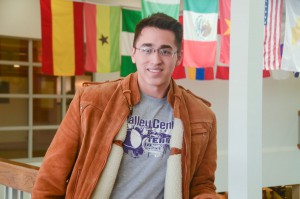 Club leadership changes hands
Club leadership changes hands
The Health Science Club, which organizes speakers to speak on topics relevant to students, recently changed leadership. Megan Regier, former president of the club recently graduated and handed over leadership to Austin Wapp, the current president of the club. Dr. John Simmons presented outgoing leaders Megan Regier and Rylee Dopps with certificates of appreciation.
Health Science Club leaders
This issue we highlight two of the leaders of the club.
Austin Wapp, president
I’m Cameron. I’m a sophomore Chemistry major and serve as Health Science Club president. I’m involved in a lot of music stuff as well including Singing Quakers, Concert Band, Jazz 1 and a jazz combo. I also enjoy weightlifting in my free time. I hope to attend medical school after I graduate Friends and go on to pursue a surgical specialty.
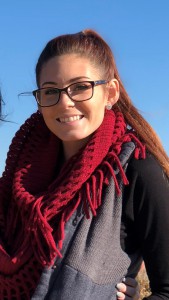 Emily Thompson, vice president
Emily Thompson, vice president
I’m Emily Thompson, a junior here at Friends who is majoring in Health Science. I play for the volleyball team and am involved in the American Sign Language club along with being the vice president of the Health Science Club. After Friends, I hope to attend medical school to become a radiologist.
Internship Experiences
The following are reflection papers written by students who have had recent internship experiences.
Katie Bailey
Via Christi Family Physician: Dr. Kevin Hoppock
This semester, I had the privilege to shadow Dr. Kevin Hoppock, a family physician at a Via Christi clinic in Wichita, Kansas. I really did not know what to expect at a family practice in a big city, but I was excited for a new learning opportunity in the health care field. I grew up in a small town where everyone knows everyone, and all of our doctors are always just a phone call away. When I moved to Wichita for college, I didn’t think health care was like that in this area. I expected the doctors to not be very personal and just move from one patient to the next; but this was not the case with Dr. Hoppock and his practice. Each and every patient who walks into his office is greeted with a big smile and helping hand. He knows each of his patients well and is always concerned about more than what brought them to his clinic in the first place. He is very efficient with his time as he figures out what is going on with his patient, prescribes a way to treat their problem, and also takes the time to check up on their personal life and makes sure everything is going good there too.
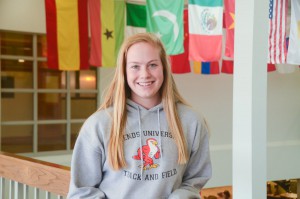 The way Dr. Hoppock interacts with his patients was very moving to witness. There were a few times where I could feel a knot forming in my throat, and I knew I was fighting to hold back tears. I also really appreciated the way he wasn’t afraid to incorporate God and religion in his practice. That’s one thing I really got from this experience; I want to treat my patients with the same respect and have the same type of relationship with them as Dr. Hoppock does with everyone who walks into his clinic. In my practice, I will strive to be someone people can confide in easily and who is known as a trustworthy health care provider. It’s hard to get people to open up to a total stranger, so that’s why I want to build strong relationships like this. I will be able to better treat my patients and help them on the road to recovery more quickly.
The way Dr. Hoppock interacts with his patients was very moving to witness. There were a few times where I could feel a knot forming in my throat, and I knew I was fighting to hold back tears. I also really appreciated the way he wasn’t afraid to incorporate God and religion in his practice. That’s one thing I really got from this experience; I want to treat my patients with the same respect and have the same type of relationship with them as Dr. Hoppock does with everyone who walks into his clinic. In my practice, I will strive to be someone people can confide in easily and who is known as a trustworthy health care provider. It’s hard to get people to open up to a total stranger, so that’s why I want to build strong relationships like this. I will be able to better treat my patients and help them on the road to recovery more quickly.
My experience with Dr. Hoppock was a great one, but through this internship, I came to realize I don’t think family practice is the profession for me, not yet at least. Right now I’m itching for something crazy and exciting. I want to see something new and different almost every day! With family practice, it’s fairly easy to get into a routine and you can almost predict how certain days are going to go. There’s nothing wrong with that at all, but for now it’s too slow-paced for me. I was thinking about it, and I think after I get a few years of experience under my belt, and as I get a little older, family practice may be just the thing I need to keep me in the health care profession. In medicine, I feel it would be easy to get burned out and tired of working long shifts with minimal breaks. Transitioning to family practice would be a good change of pace for me, and I think a good thing to do once I’m older.
For next semester, it would be fun to intern somewhere like an emergency room, under an orthopedic surgeon, or even for a dermatologist. All of these professions interest me very much, and I would love to give any of them a shot. The one thing I know for sure is that a career in the health field is a career for me. I enjoy helping people and working at a job that is hands-on and interactive. As of now, I want to be a physician’s assistant, which means I have some options when it comes to choosing where I want to specialize, and that is so exciting to me! I can’t wait to learn more about the health care field and see where I fit into the puzzle once I graduate and begin looking for a job!
Natali Engle
Cypress Physical Therapy: Dr. Julie Waltemath
I shadowed at Cypress Physical Therapy clinic for my internship experience. At the clinic, I had the opportunity to shadow Dr. Waltemath, who I refer to as Julie, and two of the other therapists in the clinic. I would attend my internship once a week in four-hour shifts and that schedule worked well for me. I felt like I was able to observe a wide variety of patients in that time frame. This experience showed me a more personal side of my desired profession, allowed me to apply the anatomy concepts I have learned in my classes here at Friends and reassured me that this is the field of study I want to go into.
On my first day in the clinic, the thing I remember most was how personable each therapist was in their own way with their patients. For a patient, being in physical therapy usually means they have lost some mobility which can be a hard ordeal to cope with. I believe the therapists know this to be true, and they tried to keep a calm and inviting composure with everyone who came to visit them. If a patient came in feeling negative because they were not seeing results, then Julie would try something new that day to try to lift their spirits and give them hope for the rest of the day. Some patients needed humor to help them through their time in the clinic, and there was no shortage of that between the patients and the therapists, which I really loved. I also saw some situations where the therapist would have to be very serious with their patient and show them that if they do not work hard outside of the clinic, then they are going to have a very hard time getting their mobility back. I think people skills are extremely important for this profession. Through my experience with Julie and the other therapists, I was able to gain experience listening to how they worked with patients, and was even able to talk with some myself.
I had taken an anatomy course prior to my internship experience, and I was pleasantly surprised that I was able to apply some of that knowledge in the clinic. Julie and the other therapists would often introduce me to the patient when they arrived and give me a brief description of what problems the patient had. I learned many facts about shoulder and knee repairs, as well as many interesting cases of nerve disruptions causing the patient pain. One of my favorite times in the clinic was when the therapist would have time to quiz me on certain nerve or muscle innervation surrounding the underlying problem. Here, I was able to learn more and apply my prior knowledge of these things in a real-life setting, which I think really helped me gain a better understanding overall. As the therapists would give the patients exercises to do, I was able to learn what movements helped or hurt the healing process of a certain injury. I was also able to learn how certain muscles being tight or hurt could lead to other problems, and it often took Julie some poking around to find the main underlying problem. I had no idea I would be able to learn so much in such a short amount of time spent with these extremely intelligent therapists.
This experience at the Cypress Clinic gave me reassurance that this is the field of study I want to pursue. Watching the therapists interact with patients and just observing in such a relaxed atmosphere really sat well with me. I think my personality fits well with the job requirements of a physical therapist, and I can honestly say I would wake up every day and care for people the way I observed it being done. I take a lot of interest in muscle function, and I saw that the therapists I observed did too. Also, I saw a true passion in every one of them to truly help and care for each patient on an individual level. These things alone are enough to convince me that I am in the right area of study. Overall, I would say I had a great experience in my internship opportunity, and I am very grateful for it. I know graduate school will be difficult, but I loved every minute of observing in that clinic so I know it will be worth it.
In the future, I would like to shadow in a different physical therapy clinic to gain even more knowledge of how to individualize my practice and see how other places operate. I also would take some interest in maybe shadowing an orthopedic surgeon. I think this could be useful because if I want to be a physical therapist it would be good to get an inside view of the muscles being repaired that I am about to work with.
Damien Hiser
Cypress Physical Therapy: Several Doctors
I spent my internship this past semester at Physical Therapy Services at Cypress under physical therapists Julie Waltemath, Steve Vequist, Jill Austin and Karl Glick. These therapists are truly magnificent people; they made me feel extremely welcome on my first day in the clinic. They kept this same attitude during my entire time there; I never felt like I was unwanted or that I was in their way. Every effort by them was made to ensure I was observing patients and getting the full experience of being an intern.
I spent the majority of my time in the clinic under Julie and Steve. Both are extremely knowledgeable and very caring people. They ensured each patient received quality treatment as well as made sure the patient was happy and comfortable in the clinical setting. Each patient was greeted with a smile and a warm hello by both therapists. Steve was more of the teaching type; he taught me a great deal about the body and how each part works with the other. He would explain in great detail the injury that occurred to a patient and how he was going to treat them and why a certain exercise was being used. He also loved to quiz me and make sure I was properly digesting the information he was feeding me. Julie similarly would explain what she was doing with patients in great detail and taught me about many of the techniques she utilizes for patients.
Within the first two weeks of my internship, I was trusted with the responsibilities of administering electrical stimulation, placing hot packs on various patients and hooking up patients to traction machines. I even lead one patient through his rehab exercises independent of the therapist near the end of my tenure there. This was a very unique responsibility that allowed me to have hands-on practice and experience with delivering patient care; something most other clinics may not allow their interns to do.
All of the therapists were extremely kind and caring people, and I believe one of the biggest takeaways from this experience is this patient interaction. Steve and Julie showed me every day how to engage with patients and encourage them and keep their spirits up. Steve and Julie were always able to bring a smile to their patients’ faces and were always able to quell their worries about any particular injury. I saw almost every patient buy into what these therapists were doing for them, and I believe that is a key to the success they had in the clinic. I saw patients come in February and leave in March with normal function returning to them and all the confidence in the world to do those things that an injury prevented them from doing. It was truly awesome to watch this occur.
Going to the clinic to shadow Steve and Julie was always the highlight of my day. I always looked forward to seeing them and knowing I was going to be learning a lot from these two. Leaving for the semester was very hard; all of the therapists had a close-knit bond they had woven me into as well. I am extremely thankful for the opportunity to have shadowed them for over 100 hours. I learned so much about patient care and what it truly is like to work as a physical therapist from them, and I can only say that my love for the field has grown from my experiences with them. I look forward to being able to shadow under these wonderful therapists again.
I believe this program offered us students an excellent venture into the specific areas of study we want to go into. I am extremely grateful for the pre-health professions internship, and I believe the program has very few flaws. It seemed that every student had a positive experience with their particular fields. My only wish is to see an electronic method used to log shadowing hours, as this is much more efficient and takes losing papers out of the equation. I’d like to thank Prince and Sonya for providing this opportunity for students and for future students who take this class. It was a huge benefit to me, and I look forward to taking it again in the future.
Jocelyn Logan
Via Christi Emergency Rooms: Dr. David Lehr
It was solely curiosity that intrigued me to enroll in the pre-health profession internship. I overheard several classmates talking about this great opportunity, and I knew instantly I had to jump on that train. There was just one hiccup. The internship was for shadowing physicians. My current course of study is to become a physician assistant (PA) not a physician. So, I walked away a little uncertain and made haste to discuss this with my advisor to inquire about the availability of other options. We met and talked about the similarities, differences and advantages of the internship.
Suddenly it clicked! Since physician assistants work directly with physicians, I can walk away with two shadowing enrichment experiences. I began to say to myself “No Big Deal!” I have the next best thing, a physician. Not just any physician but an Emergency Department (ED) physician. I said to myself, “I’ll take it!”
The ED experience:
Shadowing in the Emergency Department was no easy task. It was fast-paced, always changing and at times emotionally challenging. I shadowed a physician by the name of Dr. David Lehr. His specialty was in family medicine. He is now working as an emergency medicine physician in three different Wichita Via Christi hospitals (St Theresa, St Francis and St Joseph).
Dr. Lehr was a former carpenter and painter before attending medical school in his early 3O’s and didn’t start practicing until his mid-40’s. As a skilled emergency department doctor, he explained during one of our many conversations that I must be prepared at all times for anything, and that I must without hesitation be willing to treat all patients who come regardless of their race, illness or injury type. He taught me the role of an ED doctor foremost is to stabilize and treat patients. I was told to never rely solely on a test. He would say “They are helpful, but are not conclusive. Trust your instincts.” “You don’t have to be smart to go to medical school, but you must work hard.” These are the two statements I would hear him say week after week.
While shadowing there was no downtime. Everything was done on the go. I barely had time to eat, and so often I found myself without a consistent lunch break. Patient after patient would come. Each one completely different than the next and required an entirely different form of treatment. As we bobbed and weaved in and out of patient’s rooms, I observed extreme mental health issues, trauma injuries, prescription drug abusers, cancer patients, geriatric patients, children and patients with early stages of heart attack or stroke. You name it, I saw it! It was the most diverse experience I had ever encountered, and I loved every minute of it. I found it interesting to see the various interactions between staff members and the doctors. They relied on each other to ensure the best possible care for the patients. Not only did I work directly with the ED physician, but also mid-level providers such as nurse practitioners and physician assistants.
The calling:
The pre-health profession internship was the best thing I could have ever done. I started out this journey thinking I wanted to be a physician assistant and walked away discovering my true calling as a physician. I realized being a mid-level health care generalist just wouldn’t do. I wanted to know everything. The fear of being too old to go to medical school or the fact I would be in college forever went right out the window the moment I stepped into the Emergency Department. Though I loved shadowing in the Emergency Department, I enjoyed the interactions with the children the most. I think for my next shadowing experience I would like to shadow a pediatrician or pediatrics surgeon.
I highly encourage anyone who is interested in becoming a doctor or any health care profession to take full advantage of the pre-health profession internship. In order to discover your passion, it is essential to follow your curiosity and uncover your less-apparent interests. Those interests are what distinguishes you from ordinary to extraordinary. Pursuing them with conviction sets you on the path of unlocking who you are.
Freshman survival
By Daniel Yeremin
“How was it done,” you ask? “How did you survive your first year in college? Was it through tears, migraines and heart aches?” Well, no, all those are answers, but I have another.
First, surviving takes practice, and there is no better place for practice than the choir room. Who wouldn’t want to spend their lunch with the same people every day, gathered around a piano and a person waving their hands? Choir lets you express yourself while you bond with your closest friends—literally, they’re halfway on your seat.
Second, surviving necessitates eating. Sure, you may be able to live a few days without food, but even that ramen budge hardly qualifies as living. To solve this problem, the school conveniently provides the mandatory option of on-campus food. Whether it is the cafeteria or the flat-bread restaurant known as Sandella’s, you will never have to eat at another location. The meal plan you purchased was enough to drown a hungry student. This gives you ample opportunities to share an after-choir lunch with your friends, and the possibility of meeting new ones. Once you’re as plump as the squirrels that pillage the student leftovers, it is time for your four o’clock nap. This will help you compensate for the sleep you lost going to your 7 a.m. lab. You will commence your homework at a later date since sleep is currently a survival priority.
All this, said and done, is a part of the life-cycle of Freshman sapiens. Living through your first year of college is not a simple task, but as long as you manage to find time to eat, sleep, enjoy your friends, and maybe get some homework done, all the hardships will be worth it. After all, there is nothing more important to Friends than friends.
Faith and science
By Macey Westbrook
Can faith and science coexist? Yes. I believe they can. In science, we have facts to back up our claims. In faith, we don’t. We believe, therefore in our hearts, we know. I believe this is where the gap begins. As human beings, I think it is safe to say we are more comfortable with being very certain of what is, than what is not.
On the other hand, how can one be content with not believing that there is a greater power behind all of creation? For example, when looking at the trees, the mountains, the animals, all of humanity and the way the entire world has a structure and a function, how can one not believe there is a God, a higher power, or something that created this world of organization and/or this world of entropy? As humans we are more comfortable concluding “this is how it works” based on the results we can find ourselves that are measurable evidence, than we are of “things” we cannot understand.
Yes, I believe faith and science can coexist. Faith in general is belief. Every person has faith in something. A person of faith may not be able to give you a definite answer, however they are sure of what they believe. Many people after reading this last sentence may not agree with this statement. They may not agree because there is not a clear, concise answer. Which is frustrating. I believe therefore it is so difficult to trust in just faith alone. You believe; however, you cannot give a definite answer because you are leaning on your own understanding.
Again, this is where the gap between faith and science begins. For example, we have faith that the sun will rise every day. However, when it comes to thinking about “who or what makes the sun rise every day,” that is where we all become divided. At this point, our theories or our beliefs become different and we become skeptical of what the answer to the question really is. But in some cases, will we ever have a definite answer? Or will things always be kept a mystery? And if so, will we be willing to be okay with trusting in our gut feeling? In the end, if there is no god, no super natural force or no higher power, and I, as a follower of Christ, am wrong, what do I have to lose? I believe I will lose nothing.
Q&A: Adventure of a lifetime
In summer 2017, Madeline Flucke had the opportunity for an internship at Sea Life Park Hawaii. We had the opportunity to interview her.
Please tell us about the institution where you were an intern.
Sea Life Park is a marine park located on the island of Oahu, Hawaii. It is home to a variety of different species of marine wildlife: dolphins, sea lions, a wholphin (a hybrid species of an Atlantic bottlenose dolphin and a pseudo killer whale), green sea turtles, rescued sea birds, fish and sharks.
What made you choose this organization for an internship?
I chose this organization because I had heard great things about their internship program. It is one of the most hands-on in the country. I also had a friend who had interned there in the past, and she highly recommended the facility to me.
Please give us a comprehensive description of what you did when you were at the internship.
At the internship I worked with seven dolphins in our Aloha program, which is a dry encounter program, and the Dolphin Encounter, which was an in-the-water interactive program. I also got to assist and help with a number of husbandry procedures such as diet preparation, assisting in taking chuff samples, watching blood samples being taken, assisting in taking gastric samples, assisting in taking fecal samples, as well as taking body measurements. I also assisted and learned how to perform a daily physical exam, count respirations, and how to weigh out and sort fish according to specific and strict criteria for the dolphins’ diet. I learned SDs (descriptive stimulus) that trainers use to ask a dolphin for a specific behavior. I had the amazing opportunity to interact with guests on a daily basis and get to have some play sessions and relationship-building sessions with a trainer’s supervision.
What are your future prospects with this institution?
I would love to come back and work at Sea Life Park Hawaii. Everyone who works there wants to help you succeed and are kind and compassionate. They welcomed me into their family and for that I will be forever grateful.
What other plans do you have?
I am hoping to intern in the future with the United States Navy Marine Mammal Program (my dream job) or the National Marine Mammal Foundation. I am also looking into going to Singapore for a Blue Whale Conservation Internship. I would like to eventually work abroad for a while.
Any advice to share?
My advice for anyone who is looking to internship is to apply to a lot of major and obscure organizations. If you don’t get the institution you want, remember that you have to start somewhere in order to build a reputation and a name for yourself. Internships are a great way to tell if you are on the right career pathway as well. If you end up not liking your internship there is always time to change what you want to do! My biggest pieces of advice is to HAVE FUN and not be afraid to try new things, get messy, be adventurous, and give it all you got. What have you got to lose?
The connection between art and science
By Elizabeth McKee
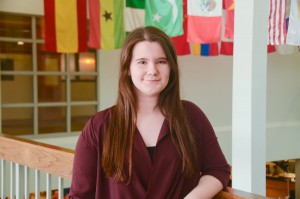 Art and science. Those who practice neither may believe they are unconnected and distant. One is driven by hard data, the other by emotion. In reality, there is a natural overlap. Both are a means of investigation; they ask questions and then strive to answer them. They begin with an idea, driven to a question and then a possible answer. Artists and scientists require precision and planning; they require practice and dedication. Artists study and learn the techniques necessary to achieve what they hold in their minds, much like scientists do in order to properly conduct procedures and experiments in the laboratory. In ancient times, the Greek word for “art” was Τέχνη, Romanized as tékhnē or techne, and was the ancestor of words like “technique.”
Art and science. Those who practice neither may believe they are unconnected and distant. One is driven by hard data, the other by emotion. In reality, there is a natural overlap. Both are a means of investigation; they ask questions and then strive to answer them. They begin with an idea, driven to a question and then a possible answer. Artists and scientists require precision and planning; they require practice and dedication. Artists study and learn the techniques necessary to achieve what they hold in their minds, much like scientists do in order to properly conduct procedures and experiments in the laboratory. In ancient times, the Greek word for “art” was Τέχνη, Romanized as tékhnē or techne, and was the ancestor of words like “technique.”
A look at art and science throughout time
There are many surviving structures from ancient times which display a correlation between art and science. The Egyptian pyramids are a well-known example. The Great Pyramid of Giza, one of the Seven Wonders of the Ancient World, was built approximately 4,578 to 4,598 years ago and rises 481 feet into the air. Originally cased in reflective white limestone, the pyramid was not only a tomb for the pharaoh, but was art. Created to be a tomb, it was born of a combination of art and math. It was near-flawlessly made, showing a superior usage of mathematics and was created to be grand and beautiful.
Skipping forward to the Renaissance, Leonardo da Vinci was at his prime. Known best for the paintings Mona Lisa (c. 1503) and The Last Supper (c. 1495–1498), many people glaze over the fact that da Vinci was also a scientist. Throughout his life, he focused on many different disciplines of science such as mathematics, engineering, anatomy, geology, astronomy and botany. He was well-versed in both art and science and is noted for having at one point wrote, “Principles for the Development of a Complete Mind: Study the science of art. Study the art of science. Develop your senses – especially learn how to see. Realize that everything connects to everything else.”
Leonardo da Vinci is a prime example of the fact that a singular individual can possess exceptional skills in both art and science. If da Vinci is too grand of an example of this, look around at the students here at Friends University. You may be surprised to see how many science majors are artists, with some even carrying an art or music minor alongside their health science or zoo science major. Spanning from sculptors and painters to writers and singers, artists are present in all areas of science.
The impact of art on science
It is known that art, in its many forms, has always impacted people throughout time. What is not as well known, is how it has affected science. Art played a role in the process of the identification of species. Art has played a role in understanding and studying the anatomy of plants and animals. Art has inspired ideas in science. Art has inspired people to go into science. Movies and television shows such as Star Wars, Star Trek, Jurassic Park, and more recently Black Panther, are inspiring both kids and adults to pursue science. Star Trek and Star Wars have inspired many to pursue careers in physics, astronomy and engineering. Since its release in 1993, Jurassic Park has driven research in paleontology and molecular biology. In fact, the same year it was released, scientists managed to extract and sequence DNA from a 120 to 135-million-year-old weevil discovered in Lebanese Amber. The discovery was announced during the time between the premiere of the movie and the day of its release in the United States and sparked interest in ancient DNA and if it is possible to resurrect extinct species.
The presence of science in art
Whether it be in class or in discussion, you may have heard of the Fibonacci sequence before. It is a numerical sequence in which each number is the sum of the two previous numbers: 1, 1, 2, 3, 5, 8, etc. If you piece together a series of squares with lengths that correspond with the Fibonacci numbers and then draw curves from the corners of each, you will have formed a spiral. What is the importance of this spiral? Well, if you overlay the spiral over some famous painting, you will find that it often lines up. Artists usually do this without realizing it, as having this spiral present in the composition gives the piece an instinctive natural feeling and a sense of harmony.
Art and science are intimately related and depend on each other is the most unusual ways. The use of art pushed science, and science can enhance and push art. They begin with a question, and the way to answer that question varies. They inspire people and are inspired by people. They, like the society that creates and sustains them, are constantly evolving. Science requires creativity, and that is often forgotten. As someone pursuing science, you must be careful to never let go of that creativity and make sure to embrace it in whatever scientific endeavors you chose to pursue.

